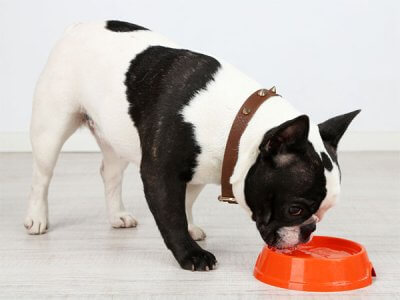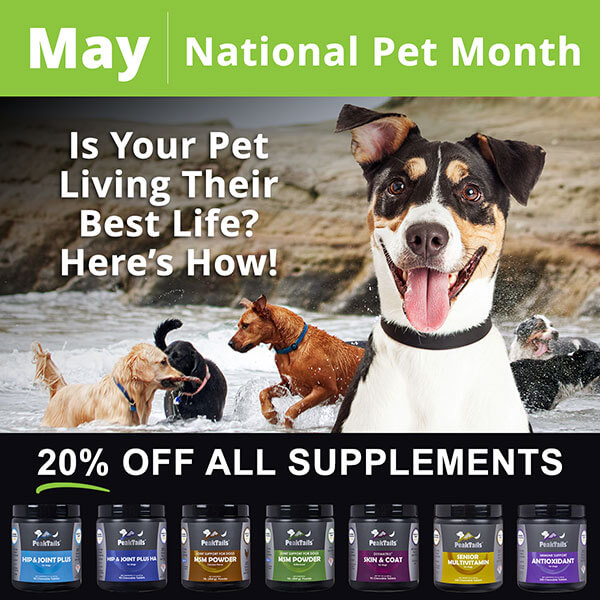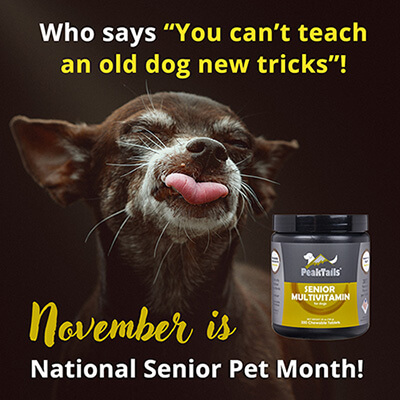July is double the reason to spoil your furry friend!
Keep them safe with a microchip and ID tag and cool them down with fresh clean water all summer long!
At PeakTails we understand how crucial it is to ensure our pets’ safety and well-being. Here’s how you can participate and protect your furry friends.
Here are some essential tips:
 1) Lost Pet Prevention Awareness
1) Lost Pet Prevention Awareness
No-one ever wants to experience the heart-wrenching feeling of losing a pet, yet every year, millions of pets go missing. While it’s a frightening prospect, there are effective measures you can take to be proactive and ensure your furry friend stays safe, sound and protected by your side, at home and outings:
Collars, Leashes and Harnesses: Your first line of defense:
- Ensure your pet has a well-fitted collar with up-to-date ID tags including your name, phone number, and rabies tag.
- Use a secure leash during walks is crucial for preventing escapes socially in unfamiliar surroundings, or triggers like noises and animals.
- Consider a harness for dogs that pull during walks providing better control and comfort.
Secure Your Home and Yard:
- Ensure your yard is fenced and gates are locked.
- Inspect your fence regularly for holes or weak spots that could allow your pet to escape.
- Fences should be high enough to deter your pet from jumping over. As a general rule, aim for a fence three times the height of your pet when standing on hind legs.
Beyond the Fence:
Even with a fence, some determined escape artist might try to dig their way out!
Here are some tips to address digging:
- Provide an outlet for digging: Create a designated digging pit filled with sand or dirt where your pet can unleash its digging instincts.
- Invest in fence extensions: Several options exist for adding a barrier at the bottom of your fence to prevent digging, like buried wire mesh or L-footings.
- Supervision and playtime: Supervise your pet when outside and provide plenty of exercise and mental stimulation through playtime and interactive toys to reduce boredom and the urge to dig.
Microchips – the Ultimate Safety Net:
- This permanent ID is the single most effective way to unite lost pets with families, even if their collar falls off or their tags become lost.
- Schedule an appointment with your veterinarian to discuss microchipping your pet.
- Verify that your contact information is correct in the microchip registry.
Use GPS Pet Trackers:
Consider investing in a GPS tracker to keep tabs on your pet’s location.
Training and Supervision:
- Train your pets to respond to recall commands.
- Supervise them during outdoor activities.
Create an Emergency Plan:
- Have a recent photo of your pet handy.
- Know the local shelters and veterinary clinics in your area.
The Power of the Community: Utilzing Nextdoor:
- Nextdoor can be a valuable tool in pet lost prevention:
- Keep your Pet’s profile updated with e recent picture, breed, and any distinguishing features.
- Alert your neighbors – immediately post on Nextdoor with a detailed description, location last seen and your contact information
- Be on the Lookout: Check your Nextdoor feed regularly for lost pet posts from your neighbors.
- Sharing these posts can significantly expand the search area and increases the chances of a safe return.
 2) Pet Hydration Awareness
2) Pet Hydration Awareness
As the summer sun heats up, keeping our pets cool and hydrated becomes a top priority. July, also designated as National Pet Hydration Awareness Month, reminds us of the dangers of dehydration for our furry companions.
Here are some essential tips to keep your pet stay hydrated throughout summer and beyond:
Provide Fresh Water:
- Ensure that your pet always has access to fresh, clean water.
- Change the water regularly to keep it cool.
Portable Water Solutions:
- When on the go, carry a portable water bottle and bowl.
- Offer water frequently during walks and outdoor activities.
Cool Environment:
- Provide shaded areas and cool spots in your home.
- Avoid strenuous exercise during peak heat hours.
Hydrating Foods:
- Offer hydrating foods like watermelon and cucumber in moderation.
- Wet food can also contribute to your pet’s daily water intake.
Fun and Functional – Swimming for Hydration and Exercise:
While providing fresh, clean water is essential, swimming can be a fun and engaging way to cool down your pet and encourage fluid intake. Here are some things to keep in mind for safe and enjoyable swimming sessions:
- Not all pets are natural swimmers: Dogs like Labradors and Golden Retrievers typically enjoy swimming, while breeds like Pugs or Bulldogs may need a life jacket or floaties for safety. Always supervise your pet in the water, regardless of their swimming ability.
- Gradual introduction: If your pet is new to swimming, introduce them slowly to a shallow area and let them get comfortable at their own pace.
- Freshwater is best: Chlorine in pools can irritate your pet’s skin and eyes. If you’re taking your pet to a pool, ensure they have access to plenty of fresh water to drink afterward.
- Provide shade and breaks: Even in the water, pets can overheat. Offer breaks in a shaded area and have fresh water readily available.
- Rinse off chlorine: After swimming in a pool, rinse your pet off with clean water to remove any chlorine residue.
Swimming can be a fantastic way to keep your pet cool, hydrated, and exercised during the hot summer months. Just remember to prioritize safety and supervision for a fun and healthy experience!
Did you know that even mild dehydration can impact your pet’s health and well-being? In this section, we’ll explore the importance of hydration, signs to watch out for, and simple tips to ensure your pet stays cool and refreshed all summer long.
Why is Hydration So Important?
Water is essential for every bodily function in pets, just like it is for us. Here’s a breakdown of why keeping your pet hydrated is crucial for their overall health and well-being:
- Regulates Body Temperature: Panting is a primary way pets cool down, but it also leads to water loss. Adequate hydration ensures they can effectively regulate their body temperature, especially during hot weather or exercise.
- Supports Digestion and Nutrient Absorption: Water aids in digestion by breaking down food and allowing nutrients to be absorbed properly. Dehydration can lead to constipation and hinder nutrient absorption.
- Lubricates Joints and Carries Nutrients: Water lubricates joints and cushions organs, keeping your pet moving comfortably. It also transports essential nutrients throughout the body.
- Maintains Healthy Skin and Hair: Proper hydration keeps your pet’s skin and hair healthy and supple. Dehydration can lead to dry, itchy skin and a dull coat.
- Optimizes Brain Function: The brain relies heavily on water to function properly. Dehydration can lead to fatigue, confusion, and even seizures in severe cases.
- Eliminates Waste Products: Water is essential for flushing toxins and waste products from the body through urination. Dehydration can lead to kidney and other health issues.
By ensuring your pet stays hydrated, you’re not just quenching their thirst, you’re supporting their entire body system and promoting overall health and well-being.
Signs of Dehydration:
Did you know that even mild dehydration can impact your pet’s health and well-being? In this section, we’ll explore the importance of hydration, recognizing the signs of dehydration, and simple tips to ensure your pet stays cool and refreshed all summer long.
Here are some key signs to watch out for that indicate your pet might be dehydrated:
Early Signs:
- Reduced urination: Monitor your pet’s bathroom habits. A decrease in urination or more concentrated urine (dark yellow) can be an early indicator of dehydration.
- Loss of skin elasticity: Perform a simple “skin tent test.” Gently pinch the skin on the back of your pet’s neck and lift. If the skin doesn’t snap back into place immediately, it could be a sign of dehydration.
- Lethargy and reduced activity: Is your usually energetic pet suddenly acting sluggish or disinterested in playtime? This could be a sign they’re feeling dehydrated.
- Dry nose and gums: A healthy pet’s nose and gums should feel moist and cool. Dryness can indicate dehydration.
More Serious Signs:
- Panting excessively: While panting is a natural way for pets to cool down, excessive panting, especially at rest, can be a sign of dehydration.
- Sunken eyes: Dehydration can cause the eyes to appear sunken or appear to have lost their luster.
- Vomiting or diarrhea: These can be signs of dehydration, especially if accompanied by other symptoms.
- Weakness or collapse: In severe cases, dehydration can lead to weakness, dizziness, or even collapse.
If you notice any of these signs, it’s crucial to act quickly and consult your veterinarian. They can assess your pet’s hydration level and recommend the best course of treatment.
At PeakTails we are dedicated to supporting your journey in pet care and wellness. By taking these proactive steps, you can ensure that your pets remain safe, happy, and hydrated this July and beyond.
Stay tuned for more tips that help you keep your pets healthy!
Just like us, our pets thrive on a foundation of good nutrition, regular exercise, and preventive healthcare. Here at PeakTails, we’re committed to empowering pet parents on their journey to giving their furry family members the essentials they need to live long, fulfilling lives.
Here are some key tips for keeping your pet healthy from a wellness perspective:
Ready to take action?
Explore our website for more in-depth articles and resources on specific pet health needs. Animal Health Blog | Kala Health, Inc.
Let’s make this National Pet Month a celebration of a lifetime of furry companionship!
Save 20% on all PeakTails Supplements!
Join us on Social for the promocode



 LIMITED-TIME OFFER for our Social Followers:
LIMITED-TIME OFFER for our Social Followers:  Sign up for email updates. First time subscribers, SAVE 15% on your first online order & receive a free Gift with your purchase!
Sign up for email updates. First time subscribers, SAVE 15% on your first online order & receive a free Gift with your purchase!